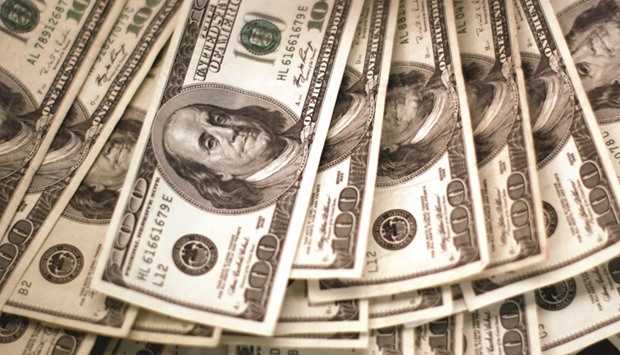The dollar erased its 2016 loss versus the euro and the outlook for higher relative interest rates may prove strong enough for the greenback to overcome historical patterns that signal its gains are overdone.
The US currency rose for a third week on renewed bets among investors and traders that the Federal Reserve will find the scope to raise rates by December. At the same time, European Central Bank President Mario Draghi sought to put a halt to speculation that monetary stimulus will be tapered anytime soon, helping extend the dollar’s rally versus the euro and pushing its relative strength against the shared currency beyond levels that often signal an impending reversal.
The dollar has been on the rise since the middle of August as signals of faster economic growth and accelerating inflation fuelled bets for US monetary tightening. Meanwhile, the euro has been under pressure from the accommodative policies of the ECB, as well as numerous political risks ranging from post- Brexit fallout to a migration crisis to a referendum that may topple Italy’s government.
“The Fed offers the market some comfort to be long dollars ahead of a hike,” said Vassili Serebriakov, a foreign-exchange strategist at Credit Agricole CIB in New York. “I don’t see what will change the dollar’s momentum for now, so it has scope to extend further.”
The dollar added 0.8% this week to $1.0884 per euro, leaving the greenback up 0.2% for the year. The currency was down more than 5% as recently as May. The Bloomberg Dollar Spot Index, which tracks the dollar against 10 major peers, rose 0.1% this week, paring its loss this year to 2.1%.
The euro’s relative strength index versus the dollar fell to about 28 on Friday, crossing below the 30 level that often signals a move may be overextended. The last time it breached 30 was in November 2015.
The dollar reached a seven-month high this week after US retail sales data bolstered the case for higher interest rates this year. Futures show a 68% chance the US central bank will raise rates by year-end, up from 61% a month ago, based on the assumption that the effective fed funds rate will trade at the middle of the new FOMC target range after the next increase.
Things look quite different on the other side of the Atlantic, where the ECB is keeping policy accommodative. On Thursday, Draghi evaded questions on the future of a €1.7tn asset-purchase program that’s currently set to end in March, pointing to the central bank’s December meeting for answers.
The dollar has scope to extend gains against the euro on diverging monetary policies, according to Tom Nakamura, a Toronto-based vice president and portfolio manager at AGF Investments, which manages C$34bn ($26bn). “In addition to central bank policy, the spectre of inflammatory Brexit headlines and the Italian referendum could provide further US dollar tailwinds.”
Hedge funds and other large speculators held net-bullish futures positions on the dollar near the highest levels since February, according to the Commodity Futures Trading Commission. Bets that the currency will rise versus eight major peers outnumbered bearish wagers by 195,402 contracts in the week through October 18.
“We do anticipate the bias towards US dollar longs to continue over the next few weeks,” said Jeremy Stretch, head of foreign-exchange strategy at Canadian Imperial Bank of Commerce in London. “Draghi is not unhappy for the euro to cheapen a little further.”

The dollar erased its 2016 loss versus the euro and the outlook for higher relative rates may prove strong enough for the greenback to overcome historical patterns that signal its gains are overdone

